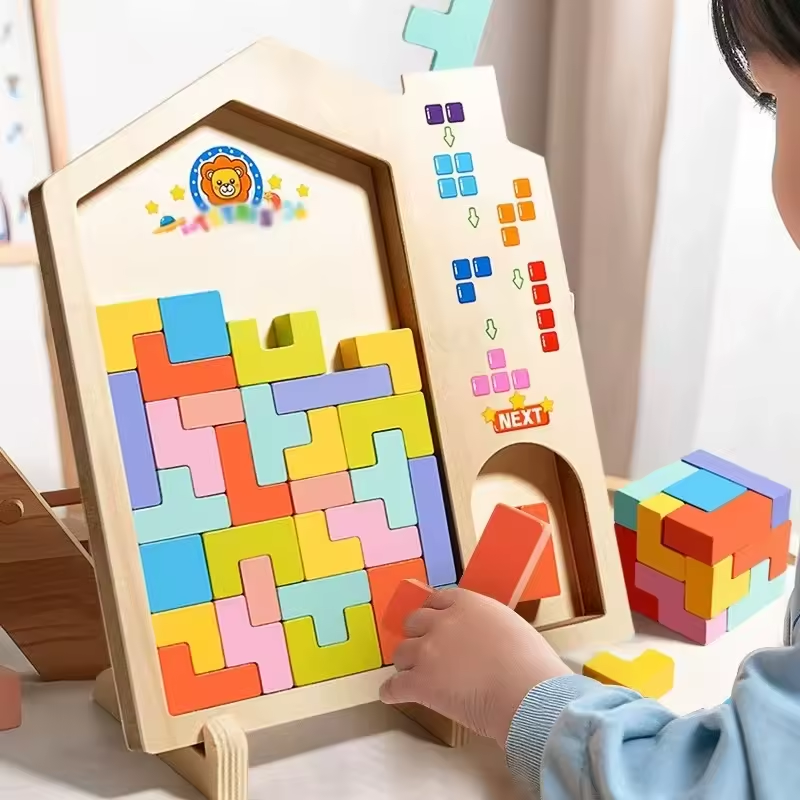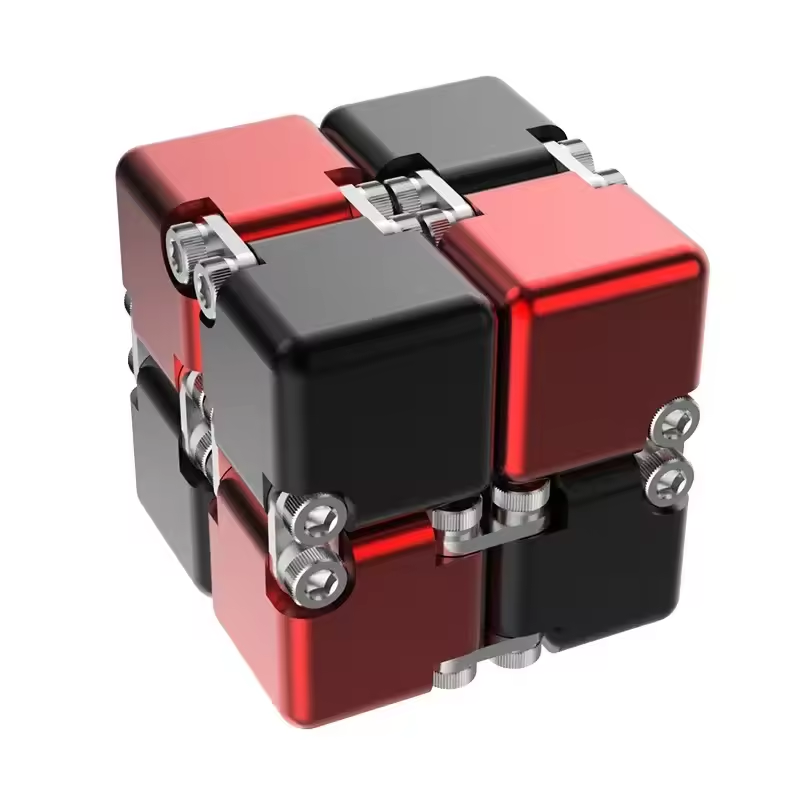Introduction to Tetris as a Board Game
When we think of Tetris, images of falling blocks on screens come to mind. However, the leap from digital to tabletop has brought a fascinating twist. Known for its addictive gameplay and strategic depth, Tetris has transitioned into a board game format, offering an engaging experience that leverages the nostalgia and gameplay mechanics unique to the classic video game. The adaptation is surprising to those familiar only with the video game but offers a refreshing take on spatial puzzle games. This introduction will set the groundwork toward understanding the Tetris board game and its appeal.
The Tetris board game brings a physical element to the well-loved digital classic. Players can enjoy the thrill of the gameplay without a screen, making it a social and interactive pursuit. Whether you’re a fan of the video game or new to the world of Tetris, the board game version is accessible, swiftly learned, and presents a challenge that appeals broadly, from casual players to seasoned puzzle solvers.
Overview of the Tetris Board Game by Milton Bradley
The Tetris board game by Milton Bradley is a tactile translation of the classic video game. Released in 1989, this game mirrors the challenge of arranging blocks into tidy rows, a familiar motif to Tetris enthusiasts. Unlike the digital version, this board game offers a multi-player experience that involves direct interaction and competition, gaining an edge in social dynamics that is absent in single-player video play.
In essence, Milton Bradley’s Tetris board game revolves around spatial awareness and quick thinking. Each player receives their own board and attempts to fit the Tetromino pieces into complete lines, much like the video game’s goal. However, subtleties and distinct rules add layers of playability and strategy. Whereas the video game features falling blocks, the board game presents a static setup where players select and place their pieces manually.

Players race against each other, drawing pieces from a communal box and deciding whether to bolster their own board or to complicate an opponent’s. This creates a lively competitive atmosphere where players must balance speed with strategic placement. The board game maintains the essence of Tetris by focusing on the organization of irregular shapes but introduces an element of sabotage, as giving difficult pieces to rivals forms a core part of gameplay.
The Milton Bradley board game version retains the iconic Tetris blocks and gameplay style, while optimizing the format for a board game setting. It promotes face-to-face interaction, challenges players in new ways, and reimagines a digital standard into an analog classic. Its success shows that even a beloved video game can find fresh, engaging life as a table-top pastime.
Essential Setup for Tetris Board Game Play
Before diving into the strategies and excitement of the Tetris board game, it’s vital to understand the setup. Here is a step-by-step guide to ensure you start on the right foot:
- Allocate Gameboards: Each player receives an individual gameboard to compete on.
- Prepare the Tetromino Blocks: These distinctive shapes are placed into a small box for players to draw from.
- Commence the Game: The youngest person can start the game with an enthusiastic “Go!”
The setup is straightforward but crucial for a smooth game. Every player should have their board and pieces organized to prevent confusion once the game is underway. The shared draw box adds a communal aspect to gameplay, with all players getting their pieces from the same source. Ensuring a clear starting signal, like the youngest player’s prompt, keeps things fair and injects a sense of fun into the game’s launch.
All players should be aware of the vital setup steps which are quick to complete. This efficiency keeps everyone eager and focused on the impending gameplay. The essential setup for the Tetris board game is an integral part of the player experience, balancing personal spaces with shared resources to foster a competitive yet orderly environment.
Playing the Game: Rules and Mechanics
Now let us dive into the heart of the Tetris board game: the rules and mechanics. Here’s a simplfied breakdown that will help you master gameplay.
Firstly, all players begin by simultaneously drawing blocks from a common pool when the youngest player shouts ‘Go!’. Each drawn block must be placed directly onto the player’s gameboard or given away to another player.
When placing blocks on your board, ensure they either touch the board’s bottom or another block. Remember, blocks must cover full squares, not just parts, and can’t overlap or exceed the gameboard’s grid.
Unlike the video game, the board game version doesn’t require that you eliminate rows and you’re free to place blocks below others which is not possible in the classic video game.
But there’s a twist! Don’t like the piece you picked? Pass the troublesome block to an opponent’s board. It may not fit well on their board, leaving them with empty spaces and slowing down their progress.
Speed plays a critical role here. You must make quick decisions about where to place your block or whom to pass it to. This adds excitement and pressure, mimicking a need for swift moves — a nod to the video game’s fast-paced environment.
The game concludes when one player places a block that reaches the top line of their gameboard. When that happens, everyone stops. Players then tally the empty squares on their boards. The one with the fewest uncovered squares emerges victorious.
Understanding these rules and mechanics will give you the upper hand in playing the Tetris board game. Keep these key points in mind for a competitive edge and a whole lot of fun.

Strategy Tips for Tetris Board Game Success
After understanding the basic rules and setup of the Tetris board game by Milton Bradley, it’s time to sharpen your strategy for success. Here are some strategy tips to elevate your play:
- Build from the Base: Start placing your blocks from the bottom of the board up. This provides a stable foundation and prevents leaving gaps in lower levels.
- Mind the Gaps: Always aim to fill every possible space. Leaving gaps can quickly add up and reduce your chance of winning.
- Quick Decision Making: Speed is essential. Hesitation can slow you down, allowing your opponents to outpace you.
- Piece Selection: Be selective with pieces. If you can’t use a piece effectively, consider giving it to an opponent to disrupt their strategy.
- Watch Your Opponents: Keep an eye on your opponents’ boards. This helps to identify when it’s a good time to pass them a difficult piece.
- Adaptable Strategy: Be ready to adapt. Your plan may change based on the pieces you draw or receive.
Staying mindful of these strategic elements can make a significant difference in gameplay outcomes. Balancing speed with careful planning, reacting to the varying circumstances, and interacting with your opponents are all critical factors in becoming a Tetris board game master.
Unique Aspects and Player Interaction in Tetris Board Game
The Tetris board game stands out for its unique gameplay and social dynamics. Unlike the solitary feel of the video game, the board game fosters direct interaction, often leading to lively competition. Here are some of the unique aspects and how they enhance player interaction:
Encounter Unpredictable Twists
In this game, the element of surprise plays a key role. You might draw the perfect piece, or you might get one that is hard to place. Your next move can either set you up for a win or give an advantage to your opponents.
Strategic Block Placement
Careful placement of blocks is crucial. You must think ahead. Plan where to place your pieces to maximize your space and be mindful of the blocks you pass to others.
Challenge Your Rivals
The ability to give challenging pieces to opponents introduces a delightful layer of strategy. This move can change the course of the game, pushing players to think defensively as well as offensively.
The Excitement of Real-Time Play
Speed is at the heart of this Tetris experience. The fast-paced game keeps everyone on their toes, forging an energetic environment. Quick reactions are central to success.
Cooperative Competition
Even as players compete, they must also pay close attention to others’ actions. This balance between self-interest and monitoring opponents creates a unique cooperative competition.
Communication is Key
Players often need to communicate their moves, adding a verbal element to the gameplay. Your ability to signal intentions swiftly and clearly can be as important as your strategic choices.
The Tetris board game transforms the familiar puzzle into a dynamic group activity. The rules foster a competitive yet cooperative atmosphere, where clear communication and swift decision-making reign. It’s a refreshing experience that challenges both the mind and the reflexes, making the board game a standout in the world of tabletop gaming.
Ending the Game: Winning Conditions and Scoring
The climax of the Tetris board game arrives when one player’s move results in a block reaching the top line of their board. This moment signals the immediate end of the game, prompting all players to halt their actions and begin the final scoring process. Winning the Tetris board game isn’t about just surviving until the end; it’s a matter of strategic block placements that minimize the number of unfilled spaces.

Here’s how the endgame scoring works step-by-step:
- Stop: As soon as a block touches the top line, all players must stop placing blocks.
- Count: Players count the empty squares on their boards. Not having a block cover a square adds to the final score.
- Least Squares Wins: The player with the fewest empty squares is declared the winner. In the event of a tie, a shared victory is celebrated.
A key strategy that can lead to success is the foresight to play defensively as the game nears its end. Anticipate the blocks your opponents might give you and plan accordingly to ensure that your gameboard remains as full as possible. Besides speed and efficiency during play, the careful anticipation of how the game wraps up can give players the winning edge they need.
It’s also worth noting that in some friendly games, participants may opt for alternative ending conditions, like playing multiple rounds and scoring based on cumulative empty spaces across all games. This variation can extend the fun and introduce a new level of strategy as players must maintain consistency across several rounds to come out on top.
Endgame scoring in Tetris provides an exciting finale to each match, where players see the results of their strategic efforts. It’s a quick and clear method that rewards quick thinking, smart plays, and adaptability throughout the game.
Comparing Tetris Board Game to Tetris Link
Taking Tetris from screen to board brings us two unique games: Tetris Board Game and Tetris Link. Both draw from the classic video game but offer different gameplay experiences. Here’s how they stack up against each other.
Gameplay Pace
The Tetris Board Game is fast. Players race to place blocks and finish first. Tetris Link is slower, focusing more on strategy than speed. Each game suits a different play style.
Player Interaction
In Tetris Board Game, you give tough pieces to opponents. This can disrupt their board and strategy. Tetris Link requires players to connect same-colored blocks. It’s more about forming alliances than causing disruptions.
Strategic Depth
Tetris Board Game relies on quick thinking and spatial planning. Tetris Link requires careful plotting and foresight. Players must think ahead and consider the impact of each move.
Endgame Conditions
The end in Tetris Board Game is swift; one block reaches the top and it’s over. Tetris Link ends when no more moves are possible. It’s a subtle but significant difference that affects how you play.
Solo vs. Collective Grid
In the Tetris Board Game, everyone has their own grid. It’s a solitary puzzle within a group setting. Tetris Link has a shared grid, making players’ actions directly affect others.
Game Length
Tetris Board Game rounds are quick, often under ten minutes. Tetris Link takes longer, allowing for more drawn-out battles of wits. Players can choose based on the time they have.
In summary, while both games come from the same legendary roots, they cater to different preferences. Those seeking a fast, interactive game may lean towards the Tetris Board Game. Those who enjoy a more thoughtful, strategic challenge might prefer Tetris Link. Recognizing these differences helps players select the right game for any occasion.




